#1920s woman painters
Text

Mainie Jellett, 1897-1944
Abstract Composition
1922
#mainie jellett#modern art#abstract#abstract art#abstract painting#irish artist#irish art#irish painter#woman painter#women in art#woman painting#cubism#abstraction#art history#1920s art#1920s style#1920s#the 20s#the roaring twenties#modern art history#abstract composition#jellett
25 notes
·
View notes
Photo

Käte Hoch, Selbstbildnis, 1929.
#Käte Hoch#self-portrait#selbstbildnis#neue sachlichkeit#magic realism#new objectivity#woman painter#painting#woman artist#fern#1920s painting#modernism#realism#1920s realism
19 notes
·
View notes
Text

Portrait of a Woman with a Headscarf
Maggie Laubser
oil on board, 1920
14 notes
·
View notes
Text
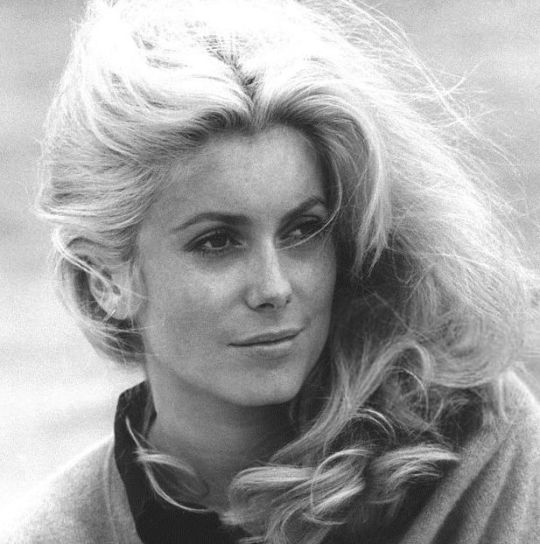

Propaganda
Catherine Deneuve (Belle de Jour, The Umbrellas of Cherbourg, The Young Girls of Rochefort)—Say what you will about the French but they really went off with Catherine Deneuve
Setsuko Hara (Tokyo Story, Late Spring, The Idiot)— "'The only time I saw Susan Sontag cry,' a writer once told me, his voice hushed, 'was at a screening of a Setsuko film.' What Setsuko had wasn’t glamour—she was just too sensible for that—it was glow, one that ebbed away and left you concerned, involved. You got the sense that this glow, like that of dawn, couldn’t be bought. But her smiles were human and held minute-long acts, ones with important intermissions. When she looked away, she absented herself; you felt that she’d dimmed a fire and clapped a lid on something about to spill. Over the last decade, whenever anyone brought up her lips—'Setsuko’s eternal smile,' critics said, that day we learned that she’d died—I thought instead of the thing she made us feel when she let it fall." - Moeko Fujii
This is round 3 of the tournament. All other polls in this bracket can be found here. Please reblog with further support of your beloved hot sexy vintage woman.
[additional propaganda submitted under the cut.]
Catherine Deneuve propaganda:

"One of the greatest european actresses of all time. Famous for portraying 'aloof and mysterious beauties', she could play both the innocent and adorable and the cold and erotic parts. She was so beautiful she was chosen to be the face of Marianne, France's national symbol."

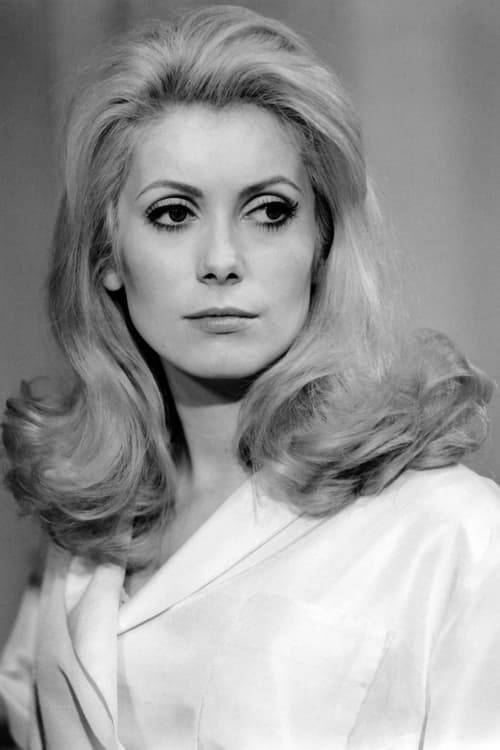
"She was a French movie star famous for icy and aloof roles and worked with some of the greatest international directors in the world (Jacques Demy, Luis Buñuel, and François Truffaut to name a few). She could kill you with her gaze and her bone structure should be studied by painters"
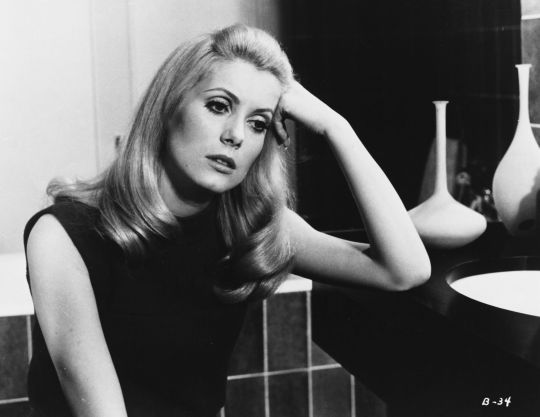
"One of the most famous of French actresses that has grace the film screen. She is just stunning and beautiful."
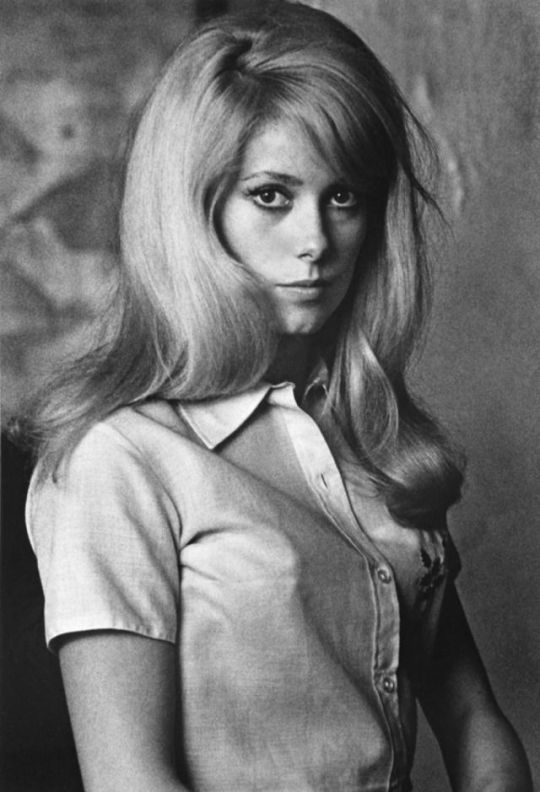
Setsuko Hara:

One of the best Japanese actresses of all time; a symbol of the golden era of Japanese cinema of the 1950s After seeing a Setsuko Hara film, the novelist Shūsaku Endō wrote: "We would sigh or let out a great breath from the depths of our hearts, for what we felt was precisely this: Can it be possible that there is such a woman in this world?"
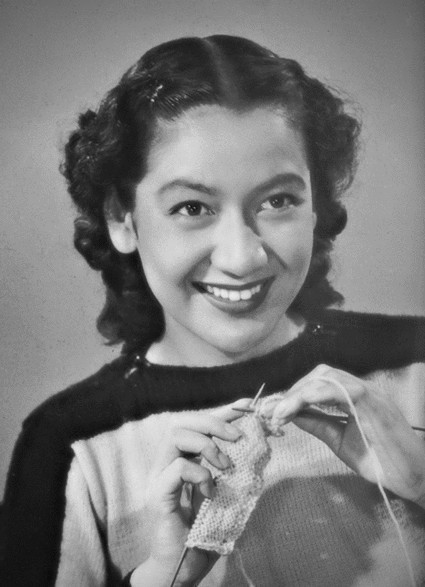

One of the greatest Japanese actresses of all time!! Best known for acting in many of Yasujiro Ozu's films of the 40s and 50s. Also she has a stunning smile and beautiful charm!
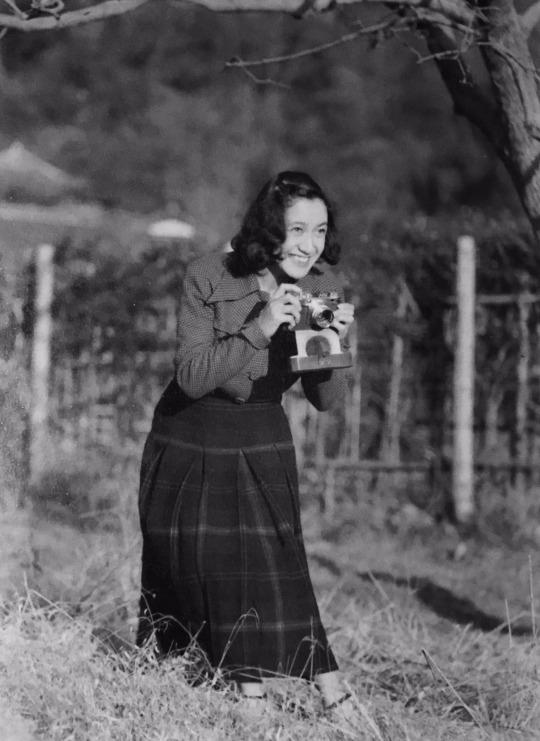
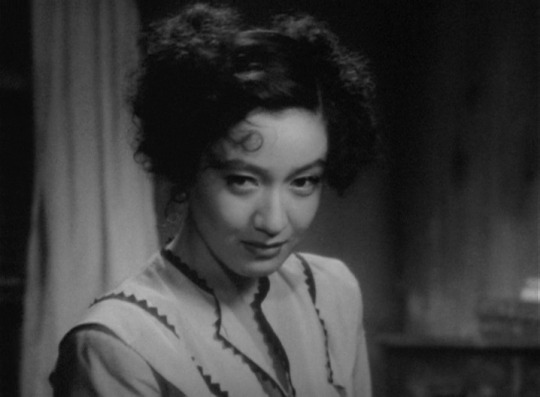
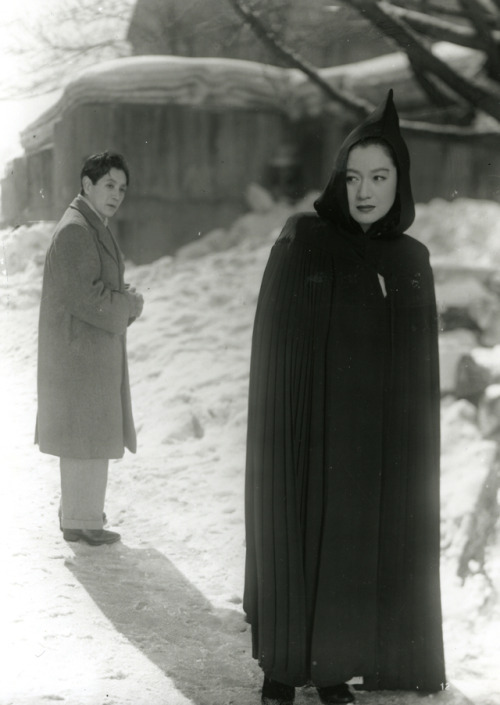
Linked gifset
Linked gifset 2



She's considered by some to be the greatest Japanese actress of all time! In Kurosawa's The Idiot she haunts the screen, and TOTALLY steals the show from Mifune every time she appears.

"No other actor has ever mastered the art of the smile to the same extent as Setsuko Hara (1920–2015), a celebrated star and highly regarded idol who was one of the outstanding actors of 40s and 50s Japanese cinema. Her radiant smile floods whole scenes and at times cautiously undermines the expectations made of her in coy, ironic fashion. Yet her smile's impressive range also encompasses its darker shades: Hara's delicate, dignified, melancholy smile with which she responds to disappointments, papers over the emotions churning under the surface, and flanks life's sobering realizations. Her smiles don't just function as a condensed version of her ever-precise, expressive, yet understated acting ability, they also allow the very essence of the films they appear in to shine through for a brief moment, often studies of the everyday, post-war dramas which revolve around the break-up of family structures or the failure of marriages. Her performances tread a fine line between social expectation and personal desire in post-war Japan, as Hara attempts to lay claim to the autonomy of the female characters she plays – frequently with a smile." [link]
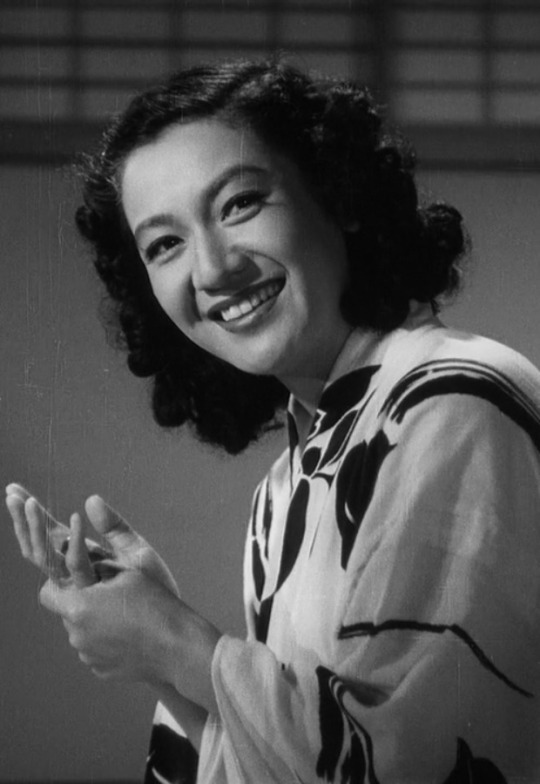
Leading lady of classic Japanese cinema with a million dollar smile
Maybe the most iconic Japanese actress ever? She rose to fame making films with Yasujiro Ozu, becoming one of the most well-known and beloved actresses in Japan, working from the 30s through the 60s in over 100 hundred. She is still considered one of the greatest Japanese actresses ever, and in my opinion, just one of the greatest actresses of all time. And she was HOT! Satoshi Kon's film Millennium Actress was largely based on her life and her career.
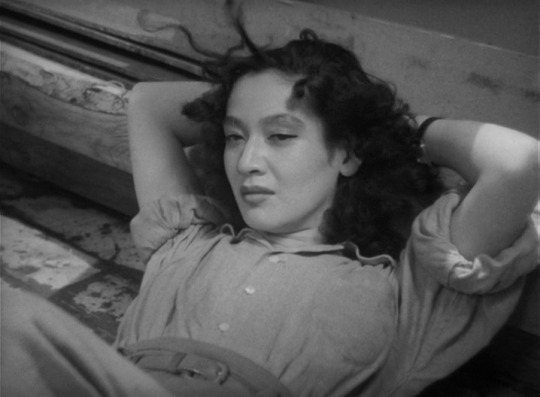
172 notes
·
View notes
Text
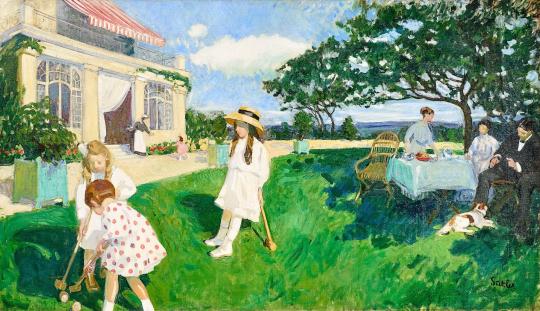
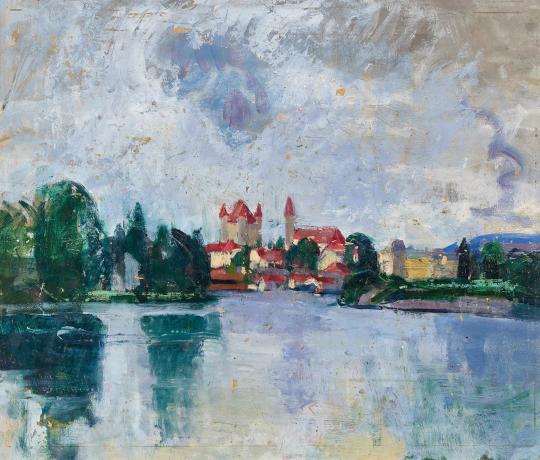
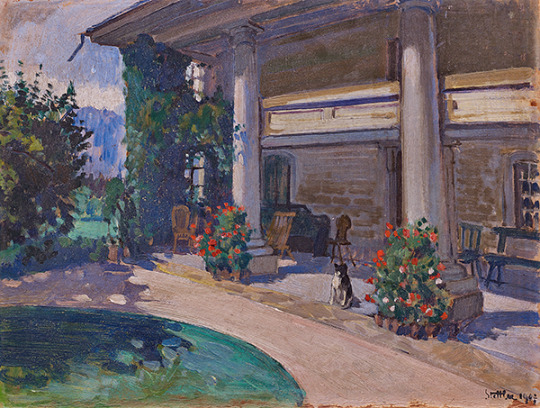

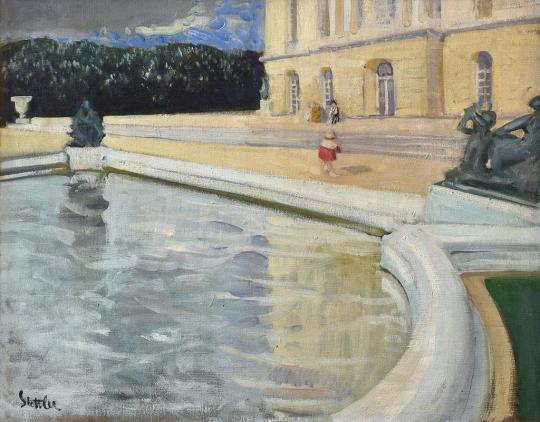
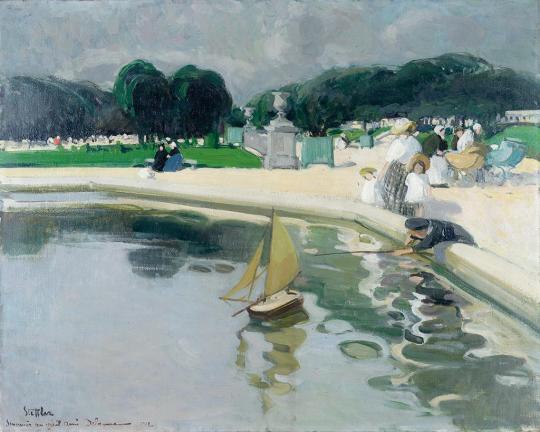




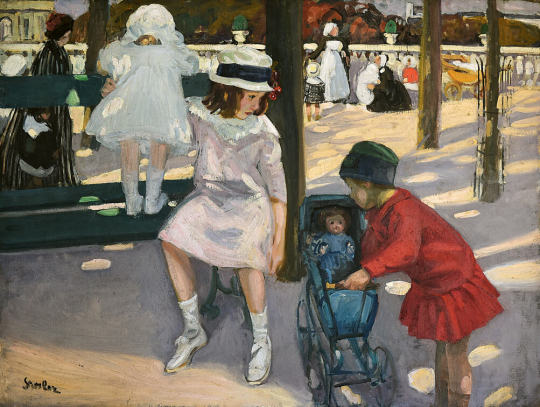
Martha Stettler (Swiss, 1870-1945)
Together with her partner Alice Dannenberg, she founded the ‘Académie de la Grande Chaumière’ in Paris in 1904, where she later became its head, much to the disdain of Swiss artist Ferdinand Hodler, who said, “We do not want women here!” He was determined to prevent women having any access to the Swiss professional association of painters and sculptors (GSMBA).
Stettler ran the academy successfully in spite of the misogynistic attitudes she was faced with in her work. It was favoured by students because of its easy-going approach to learning, and the school’s alumni included a star-studded cast; Alberto Giacometti, Meret Oppenheim and Louise Bourgeois.
Stettler also became the very first and only woman to exhibit her art at the 12th Venice Biennale in 1920. (source)
95 notes
·
View notes
Text

Gerda Wegener (1886 – 1940) Danish illustrator and painter
Woman in a swimsuit
1920's
#indianink on paper
56 notes
·
View notes
Text
THIS DAY IN GAY HISTORY
based on: The White Crane Institute's 'Gay Wisdom', Gay Birthdays, Gay For Today, Famous GLBT, glbt-Gay Encylopedia, Today in Gay History, Wikipedia, and more … February 13



518 B.C. – Pindar, the Greek poet was born today. Again, it is impossible to say precisely when the Theban poet was born, so we're picked this arbitrary date. So this is as good a place as any to mention Pindar, the greatest lyric poet of ancient Greece, whose love for Theoxenus of Tenedos is celebrated in his verse.


Self-portrait
1891 – Grant Wood (d.1942) was an American painter born four miles east of Anamosa, Iowa. He is best known for his paintings depicting the rural American Midwest, particularly the painting American Gothic, an iconic image of the 20th century.
After graduating from Washington High School, Wood enrolled in an art school in Minneapolis in 1910, and returned a year later to teach in a one-room schoolhouse. In 1913 he enrolled at the School of the Art Institute of Chicago and performed some work as a silversmith. From 1920 to 1928, he made four trips to Europe, where he studied many styles of painting, especially Impressionism and Post-Impressionism. But it was the work of the 15th-century Flemish artist Jan van Eyck that influenced him to take on the clarity of this new technique and to incorporate it in his new works.
From 1924 to 1935, Wood lived in the loft of a carriage house that he turned into his personal studio at "5 Turner Alley" (the studio had no address until Wood made one up himself). In 1932, Wood helped found the Stone City Art Colony near his hometown to help artists get through the Great Depression. He became a great proponent of regionalism in the arts, lecturing throughout the country on the topic. Wood taught painting at the University of Iowa's School of Art from 1934 to 1941. During that time, he supervised mural painting projects, mentored students, produced a variety of his own works, and became a key part of the University's cultural community.
One common theory is that he was a closeted homosexual, and was fired from the University because of a relationship with his personal secretary.
On February 12, 1942, one day before his 51st birthday, Wood died at the university hospital of pancreatic cancer. When Wood died, his estate went to his sister, Nan Wood Graham, the woman portrayed in American Gothic.

Wood's best known work, his 1930 painting American Gothic, is also one of the most famous paintings in American art, and one of the few images to reach the status of universally recognised cultural icon, comparable to Leonardo da Vinci's Mona Lisa and Edvard Munch's The Scream.
It was first exhibited in 1930 at the Art Institute of Chicago, where it is still located. It was given a $300 prize and made news stories country-wide, bringing Wood immediate recognition. Since then, it has been borrowed and satirised endlessly for advertisements and cartoons.


Wheeler and Wescott by Lynes
1899 – on this date the American curator Monroe Wheeler, was born (d.1988). Poet and author Glenway Wescott and Monroe Wheeler were an extraordinary couple. The two met for the first time in 1919, and it was, it seems, a classic case of love at first sight. At the time, Wescott was still in his teens and Wheeler just 20. Seemingly inured to the social mores of the time and inconstancies of youth, the two embarked on a relationship that can be called nothing short of a marriage, for the next 68 years, until Wescott's death in 1987. They are perfect gay Valentine icons.
The young couple travelled the world, stopping in on Gertrude Stein's Paris Salon and crossing paths with Jean Cocteau on the Riviera, while Wescott developed his poetry and later fiction (he authored The Grandmothers and The Pilgrim Hawk, among other bestsellers of his day) and Wheeler found his path. Eventually he would become the director of exhibitions and publications at the Museum of Modern Art.
The two moved with equal ease through the literary and artistic circles of London and the continent as well as their families' Midwestern homes. That their relationship thrived is notable enough. But 1927 brought a new challenge to their pairing. High-school student George Platt Lynes fell passionately in love with the strikingly good-looking Wheeler. And Wheeler, for his part, was entranced by Lyne's 'full, luscious mouth and his wasp-like waist'. Instead of driving a wedge between Wescott and Wheeler, as might be expected, Lynes soon became part of their shared life. When, after some casting about, he hit upon photography, the two nurtured his career and used their considerable connections to get him both work and gallery shows.

Triptych of Wescott-Lynes-Wheeler by Jared French
In 1930, while still in France, Wheeler entered into a partnership with Barbara Harrison to establish the Harrison of Paris press, the goal of which was to publish fine editions of new and neglected classics. Over 5 years, they produced 13 titles, including works by Thomas Mann, Katherine Anne Porter, and Glenway Wescott's A Calendar of Saints for Unbelievers, with illustrations by Pavel Tchelitchew.
In 1935, following the marriage of Barbara Harrison to Glenway's younger brother, Lloyd, Wheeler and Wescott moved back to the United States. They soon set up households both on the farm in New Jersey bought by Barbara Harrison and Lloyd Wescott and in New York City, where they shared a series of apartments with George Platt Lynes.
It was at this time that Wheeler began an association with the Museum of Modern Art when, in 1935, he guest-curated an exhibit. His position at MOMA became permanent in 1938 when he was hired as Membership Director, then moved quickly into the position of Director of Exhibitions and Publications. Wheeler's innovations in publication and exhibit design soon became well-known. In 1951, in recognition of his work in bringing French artists to the attention of American viewers, he was made a Chevalier of the French Legion of Honor by the government of France.
In 1967, in preparation for his retirement, Wheeler shifted his duties at the museum. Having long been a trustee of the museum, he was appointed counsellor and joined the International Council in its biannual meetings. After his official retirement in 1967, he continued to advise the museum on exhibitions and serve with a number of civic and arts organizations.
In 1969, Wheeler travelled as a cultural advisor with Nelson Rockefeller on a presidential mission to Latin America. In the 1970s, Wheeler travelled extensively and worked on projects documenting the history of MOMA and the collections of the Rockefeller family. Monroe Wheeler died in Manhattan on August 14th 1988 at the age of 89, 18 months after the death of Glenway Wescott.


1961 – Henry Rollins is an American spoken word artist, writer, journalist, comedian, publisher, actor, radio DJ, activist and musician.
After performing for the short-lived Washington D.C.-based band State of Alert in 1980, Rollins fronted the California hardcore punk band Black Flag from August 1981 until mid-1986. Following the band's breakup, Rollins established the record label and publishing company 2.13.61 to release his spoken word albums, as well as forming the Rollins Band, which toured with a number of lineups from 1987 until 2003, and during 2006.
Since Black Flag disbanded, Rollins has hosted numerous radio shows, such as Harmony in My Head on Indie 103, and television shows such as The Henry Rollins Show, MTV's 120 Minutes, and Jackass.
He had a recurring dramatic role in the second season of Sons of Anarchy and has also had roles in several films. Rollins has also campaigned for various political causes in the United States, including promoting LGBT rights, World Hunger Relief, and an end to war in particular, and tours overseas with the United Service Organizations to entertain American troops.
Rollins has become an outspoken human rights activist, most vocally for gay rights. Rollins frequently speaks out on social justice on his spoken word tours and promotes equality, regardless of sexuality. He was the host of the WedRock benefit concert, which raised money for a pro-gay-marriage organization.
He has said of his sexuality:
"If I was gay, there would be no closet, you would never see the closet I came out of. Why? I would have burned it for kindling by the time I was 12. Because I know with all certainty in my mind, there is nothing wrong with being gay, and you know it."


1969 – Joe Phillips is a black American artist, known for his mainstream comic book art and for his work depicting his views of gay life. Ironically, he is most recognized for portraying white, preppy males. He currently lives in San Diego, California.
Phillips was born in Atlanta, Georgia in 1969. Upon graduation he travelled to Europe where he furthered his artistic skills, taking part in various projects such as guerrilla street art.
His first major comic book job was working on the comic book "Speed Racer" for seven issues. He produced artwork for titles including "Justice League of America", "Silver Surfer", "X-Men", "Legion of Super-Heroes", "The Incredible Hulk" and "Lobo".
Phillips was one of the founding members of Gai-Jin Studios. In late 1992 he began work on the revival of "Timber Wolf," written and inked by Al Gordon, where he worked as both a penciller and as the cover artist, this run lasted for an entire story arc. In 1996 he created a new comic book character, "The Heretic", of which he was both a writer and artist. The title was released by Dark Horse Comics. Other later work included "Captain America", "Wolverine", "Green Lantern" and "Superboy".
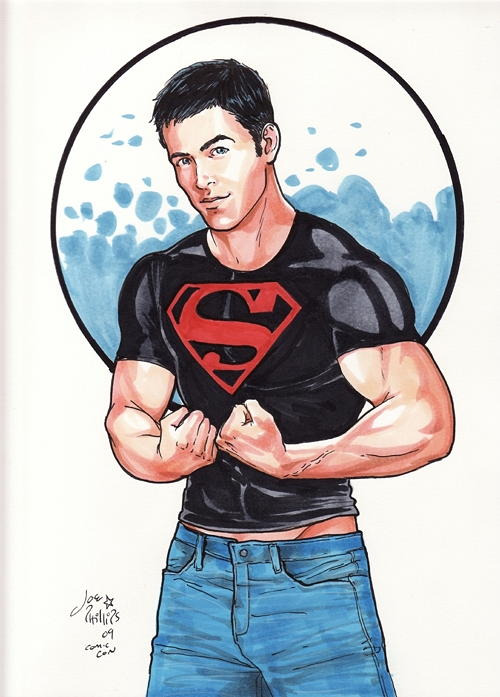
Sexy Superboy
It was while Phillips was working on a Superboy comic entitled "Superboy & Risk: Double Shot" that he first sexualized his artwork and dropped hints about homosexuality. Some readers picked up on this, one such person was art director of XY Magazine, Eriq Chang. Chang quickly offered Phillips a slot in the gay publication drawing a comic strip that would later become known as "Joe Boy".
Phillips was approached by the hardcore porn website Karas Adult Playground to produce adult animation, his first - Cumquest - was a spoof on the popular sci-fi series Star Trek. Another animation job followed for the gay porn website Absolutely Male for which Phillips created the animation The House of Morecock, a story about Jonas Morecock, a gay paranormal investigator. Morecock proved to be very popular and a set of 10 episodes was released on DVD by 10% Productions in 2001. In 2002 Morecock was nominated for a GayVN award in the category "Best Alternative Release"; it subsequently won in its category. A series of comic strip books followed alongside sets of postcard books. TLA Video lists Morecock as one of their all-time bestselling titles.

'A Boys Will Be Boys" illustration
In 2001 Phillips released "Boys Will Be Boys" - a calendar featuring original gay-themed art. In 2003 a book of the same title was released; it featured the art from the 2002 and 2003 calendars and incorporated some new original pieces. The calendar continues to be released annually.

another typical "Boys Will Be Boys" illustration
In 2006 with Adult Visual Animation, Phillips released his second adult-themed animated movie entitled Stonewall & Riot: The Ultimate Orgasm. The movie was a cross-over of the two genres Phillips was known for - Superheroes and work for the gay community. The movie was created entirely in 3D graphics. As with his previous movie, "Stonewall & Riot" was nominated for a GayVN award.
In 2013, Phillips animated and directed the official music video for UK Rock singer/songwriter Matt Fishel's single "When Boy Meets Boy". Described by Out Magazine as a "cute (and sexy)" love story "with a superhero twist", it shows an animated version of Fishel meeting a mysterious skater boy in a bar and concludes with a superhero fight and rescue sequence. British magazine The Gay UK called it "one of the best music videos we've seen in a long time." On 30 October 2013, the video for "When Boy Meets Boy" won the 2013 RightOutTV Music & Video Award for Best Pop/Rock Video. Phillips also created all the artwork for Matt Fishel's debut album Not Thinking Straight, which was released in April 2013 on Young Lust Records. The album booklet comprises 18 original illustrations by Phillips, each representing a different song's lyrics and portraying themes and issues surrounding young gay life, relationships and experiences. Phillips also created the artwork for Matt Fishel's 2013 singles "Radio-Friendly Pop Song", "When Boy Meets Boy" and "Oh Santa!"
Below: When Boy Meets Boy (3 mins 47 sec)
youtube


1987 – Steven Dehler is an American model, actor, and dancer. He has been described as the "the poster child for the modern male underwear model". He is a regular performer at The Abbey, a gay bar and nightclub in West Hollywood, California, and has been face of Marcuse Swimwear for their 2015 campaign.
With an active social media presence, Dehler has amassed over 142,000 followers on Instagram as of November 2015. Also in 2015, Dehler made the cover of Odyssey Magazine and played Mr. Coconuts on the Ellen Degeneres Show.
Steven Edward Dehler was born in Simi Valley. He is one of two children, with an older brother. While in elementary school, Dehler was the victim of bullying, where they would call him "Steven Gayler".
Dehler began his career working in West Hollywood. Originally he was a server in a small bar, then moved to doing bottle service at a club called Eleven. After winning a hot body contest at another club in West Hollywood, he was asked by a go-go dancer bookers saw Dehler and asked him to dance. After dancing at many locations around the area, by 2012 Dehler was dancing exclusively for The Abbey.
Dehler began his modeling career with Timoteo, an underwear and swimwear line. Along with Timoteo, he has also modeled for Marcuse, Freedom Reigns, and Marco Marco Underwear. Most prominently, Dehler has modeled for male underwear company Andrew Christian. One of the shoots he did involved a commercial called Freshman Car Wash, which also offered an unrated version online. Another was "Lick", which was shot with then-boyfriend (and fellow model) Montana Volby.
Well-known in the West Hollywood gay scene, Dehler is sometimes the subject of gossip columns

2009 – on the campus of Cornell University, a group of roughly 20 students lined up to hold a colorful banner that read "QUEER KISSIN' ... in progress" and then proceeded have a queer kiss-in. Direct Action to Stop Heterosexism sponsored the event, according to kiss-in participant Ashley McGovern. She explained that heterosexism is "kind of like homophobia except heterosexism has to do with all facets of society."
DASH didn't necessarily have sweeping or profound aims for the kiss-in, according to McGovern. "It was just supposed to be a fun action before Valentine's Day, it wasn't really a protest, it was more of a visibility thing ... just letting people know people are queer on campus and not afraid to be affectionate ... that was the goal — visibility and having fun," McGovern said.
Meanwhile at the University of Colorado in Boulder, Colorado, the Dalton Trumbo Fountain outside the University Memorial Center was the site of a mass make-out session titled "Make Out Stake Out." The "flash mob" of student couples of varying sexual orientations suddenly appeared at the fountain square, made out for two minutes — and then dispersed. "We're trying to remove the stigma that surrounds same-sex affection in public and, more importantly, the misconception that if you are queer and you are expressing affection in public that you are rubbing it in people's faces," junior Spencer Watson said.


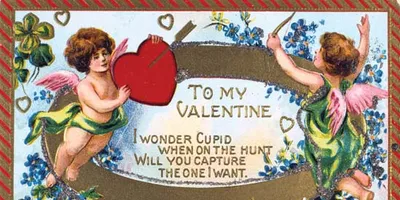
26 notes
·
View notes
Text


When Dora Maar died on 16 July 1997 at the age of 89, few people seemed to notice. It took the French newspaper Le Monde – in her home country – 10 days to publish anything. And when journalists did cotton on, they didn’t seem to think Maar was the story. The New York Times called her “a muse of Picasso” and the “principal model for many of his so-called weeping women portraits in the late 30s and early 40s”. The Independent, while admitting that Maar had been an artist in her own right, suggested that she would nonetheless be “remembered as the most poignant of Pablo Picasso’s mistresses”.
Forget that she’d also been a major surrealist photographer, one of the few women in that circle, and that she was still painting into her 80s. For critics, she was Picasso’s Weeping Woman – the eternally spurned mistress and muse. Maar herself bitterly resented being regarded as a sort of art-world Miss Havisham, the subject of someone else’s picture. “All [Picasso’s] portraits of me are lies,” she once said. “Not one is Dora Maar.”
Not before time, the Weeping Woman is having the last laugh. After a spell at the Pompidou in Paris, a major retrospective is heading to London’s Tate Modern then Los Angeles. The largest exhibition of its kind yet staged, it features nearly 300 objects: photographs, photomontages, advertising mock-ups, self-portraits, watercolours, oil landscapes and still lives. Few of these objects have been exhibited before, and certainly not on this scale. The sense is of a curtain being pulled back. Forget those Picasso portraits: here is how Dora Maar actually wanted to be seen.
Born Henriette Théodora Markovitch in Paris in 1907, to a French mother who owned a fashion boutique and a father who was a Croatian architect, her upbringing was multicultural. The family relocated to Buenos Aires when she was three, and she spent her childhood shuttling between Europe and South America, taking her first photographs on the sea journeys between. She trained as a painter in Paris, but found herself drawn to photography in the 1920s, becoming friendly with Henri Cartier-Bresson and Brassaï.
“She was very ambitious,” says her biographer, Victoria Combalia. “She wasn’t sure which direction she was going in, but she had such energy.”
In 1936 she met Picasso, and seems to have decided that the painter, nearly 30 years older, was her next project. The story of the encounter that turned them into lovers has been much mythologised. Legend has it that Maar sat in the famous literary watering hole, the Cafe les Deux Magots, playing a game where she stabbed a knife between her fingers to excite Picasso’s attention.
Whatever the truth, Combalia suggests that the striking thing is the way it suggests that she, not he, was in charge. “She wanted to seduce him, I’m sure. The whole scene with the knife is like a sadistic joke, almost a performance.”
Yet the balance soon tipped the other way. Picasso was also having a long-running affair with Marie-Thérèse Walter, which he refused to break off. He seems to have taken a perverse thrill in making Walter and Maar compete for his affections, describing a story where they came to blows in his studio as “one of my choicest memories”. Having initially painted Maar as a nymph or a bird, his portraits begin to show her in tears, notably the excruciating Weeping Woman (1937), now in Tate’s permanent collection, in which she seems to dissolve before our eyes.
Maar’s own artistic response is similarly hard to look at, though in quite different ways. A painting of hers from the same year, The Conversation, shows her and Walter sitting next to each other, almost in mirror image. Walter looks out, passive and inscrutable; Maar has her back to us, face hidden.
Yet while the relationship was emotionally punishing, it was productive. 1937 was also the year that Picasso painted Guernica, and Maar – as well as teaching him darkroom techniques – agreed to photograph the process of its creation. Indeed, it seems likely that his decision to depict that particular atrocity came from Maar, who was far more politically engaged. Not only does its style – severe black-and-white, almost photographic in its pitiless detail – borrow from her work, she actually painted a small section of it.
“He trusted her,” says Tate Modern director Frances Morris, who interviewed Maar when the latter was in her 80s. “As much as being a sexual or emotional relationship, it was a collaborative one.”
When their relationship finally fell apart in 1945, Maar was devastated and suffered a brief breakdown, intensified by the death of her mother. The guilt-stricken Picasso helped her buy a house in Provence, where she spent an increasing amount of her time. Catholicism began to occupy her life; rumours circulated – fanned by her former partner – that she’d gone mad, or become a recluse.
The truth is different, Combalia says: Maar kept making art, producing textile designs and devoted more time to painting. She also travelled, and continued to exhibit through the 50s and 60s. It’s also not true that she abandoned photography, as some claim. Though she made fewer photographs after the break with Picasso, she continued to experiment, crafting a late series of photograms (photographic prints made without a camera) in the 80s, as if reconnecting with her younger artistic self.
Maar never regained the profile she had experienced in her 20s, yet it’s wrong to say she disappeared. It was a slow withdrawal, and came about largely because Maar wanted to focus on her art. “In letters she writes, ‘Well, I don’t want to be social, I want to do my own thing. I have to paint,’” says Combalia
Morris, who visited Maar at her apartment in Paris in 1990, agrees. “It was an artist’s home. Every surface, every wall, spoke of that. There were easels and lots of canvases in her studio, covered in polythene. She was still working.”
What was Maar like to meet? Morris laughs: “When she answered the door, I thought at first it was the maid, this little old woman.” But she was soon struck by Maar’s forcefulness. “She was terrifically strong, you could see that. I think that’s what it was, in a way: making art was more important to her than how she was perceived.”
“She was very curious about the world,” Combalia adds. “She was always asking me what I was doing in Paris, what the name of my boyfriend at the time was. She loved gossip.”
Despite Maar’s talents being overlooked during her lifetime, Combalia believes we should be grateful that we can see so much work, and that so much of it is so good. “She really deserves to be known. We owe her that justice.”
32 notes
·
View notes
Text

Kobieta-ważka (Woman-dragonfly)
Wilhelm Kotarbiński
ca. 1920
#Wilhelm Kotarbiński#art#artist#painter#painting#illustrator#Kobieta-ważka (Woman-dragonfly)#ca. 1920
53 notes
·
View notes
Text
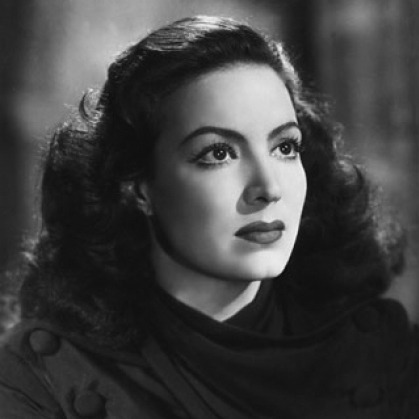

Propaganda
María Félix (Doña Barbara, La Mujer sin Alma, Rio Escondido, La Cucaracha)—Maria Felix is still possibly the most well-known Mexican film actress. She turned down multiple-roles in Hollywood and a contract with Metro-Goldwyn-Meyer in order to take roles in Mexico, France, and Argentine throughout the 1940s, 50s, 60s. She was so famous and so respected as a dramatic actress that she inspired painters, novelists and poets in their own art--she was painted by Diego Rivera, Jose Orozco, Bridget Tichenor. The novelist Carlos Fuentes used her as inspiration for his protagonist in Zona Sagrada. She inspired an entire collection by Hermes. In the late 1960s Cartier made her a custom collection of reptile themed jewels. She considered herself to be powerful challenger of morality and femininity in Mexico & worldwide--she routinely played powerful women in roles with challenging moral choices and free sexuality. But even still, years after he death, she is celebrated with Google Doodles, and appearances in the movie Coco, and holidays for the anniversary of her death.
Maureen O’Hara (The Parent Trap, The Quiet Man)—They called her the Queen of Technicolor. That right there should help introduce people to the fiery, wonderful, stunning Maureen O’Hara. She was from Ireland, born in 1920, and started in theater at the age of ten. At 15, she was winning drama awards, including one for her performance as Portia in the Merchant of Venice. At 16, she was the youngest pupil to graduate from the Guildhall School of Music. By 18, she transitioned to film, starting off with a bang alongside Charles Laughton in Hitchcock’s Jamaica Inn, and proceeded to work steadily up through the early 1970s. She was in adventures and comedies and romances, spent a lot of time in westerns giving merry hell to John Wayne (and less merry hell to the indomitable John Ford — she held her own even when he was verbally abusive and demeaning to her). She was in The Quiet Man, which was the first American-made film entirely filmed in a foreign country. She helped make American Christmas what it is with Miracle on 34th Street. She played a lineup of headstrong, forthright women second only, perhaps, to Katharine Hepburn. She was married three times, lived for a while with a boyfriend in Mexico, sued for custody of her daughter in the 1950s, AND sued a magazine for libel in the same era. After mostly retiring from acting, she edited a magazine. She eventually sold the magazine to spend more time with her grandson, but even then ran a ladies fashion store. She was an outspoken, brilliant, passionate lady, with amazing red hair, a career to envy, and — well — that face!
This is round 2 of the tournament. All other polls in this bracket can be found here. Please reblog with further support of your beloved hot sexy vintage woman.
[additional propaganda submitted under the cut]
María Félix:

She's Thee Hot Vintage Movie Woman of México. She's absolutely gorgeous and always looks like she's about to step on you. you WILL be thankful if she does.
"María Félix is a woman -- such a woman -- with the audacity to defy the ideas machos have constructed of what a woman should be. She's free like the wind, she disperses the clouds, or illuminates them with the lightning flash of her gaze." - Octavio Paz
María Félix is one of the most iconic actresses of the Golden Era of Mexican Cinema. La Doña, as she was lovingly nicknamed, only had one son, and when her first marriage ended in divorce her ex-husband stole her only child, so she vowed that one day she’d be more influential than her ex and she’d get her son back. AND SHE DID! María Félix rejected a Hollywood acting role to start her acting career in Mexico on her own terms with El Peñón de las Ánimas (The Rock of Souls) starring alongside actor, and future third husband, Jorge Negrete. She quickly rose to incredible heights both in Mexico and abroad, later on rejecting a Hollywood starring role (Duel in the Sun) as she was already committed to the movie Enamorada at the planned filming time. Of this snubbing she said, quote: “I will never regret saying no to Hollywood, because my career in Europe was focused in [high] quality cinema. [My] india* roles are made in my country, and [my] queen roles are abroad.” (Translator notes: here the “india” role means interpreting a lower-class Mexican woman, usually thought of indigenous/native/mixed descent —which she had interpreted and reinvented throughout her acting career in Mexico— and what abroad was typically considered the Mexican woman stereotype, with the braids, long simple skirts, and sandals. This also references the expectation of her possibly helping Hollywood in perpetuating this stereotype for American audiences that lack the cultural and historical contexts of this type of role which would undermine her own efforts against this type of Mexican stereotypes while working in Europe) She was considered one of the most beautiful women in the world of her time by international magazines like Life, París Match, and Esquire, and was a muse to a vast number of songwriters (including her second husband Agustin Lara,), artists, designers, and writers. Muralist Diego Rivera described her as “a monstrously perfect being. She’s an exemplary being that drives all other human beings to put as much effort as possible to be like her”. Playwriter Jean Cocteau, who worked with her in the Spanish film La Corona Negra (The Black Crown) said the following about her, “María, that woman is so beautiful it hurts”. Haute Couture houses like Dior, Givenchy, Yves Saint Laurent, Balenciaga, Hérmes, among others, designed and dressed her throughout her life. She died on her birthday, April 8, 2002, at 88 years old, in Mexico City. She was celebrated by a parade from her home to the Fine Arts Palace in the the city’s Historic Downtown, where a multitude of people paid tribute to her. Her filmography includes 47 movies from 1942 until 1970, and only two television acting roles in 1970. She has 2 music albums, one recorded with her second husband, Agustín Lara, in 1964 titled La Voz de María y la inspiración de Agustín «The voice of María and the inspiration of Augustín», and her solo album Enamorada «In Love» in 1998. Her bespoke Cartier jewelry is exhibited alongside Elizabeth Taylor’s, Grace Kelly’s and Gloria Swanson’s. In 2018, Film Director Martin Scorsese presented a restored and remastered version of her film Enamorada in the Cannes Classics section of the Cannes Festival and Google dedicated a doodle for her 104th birthday. On august 2023 Barbie added her doll to the Tribute Collection.

Maureen O'Hara:
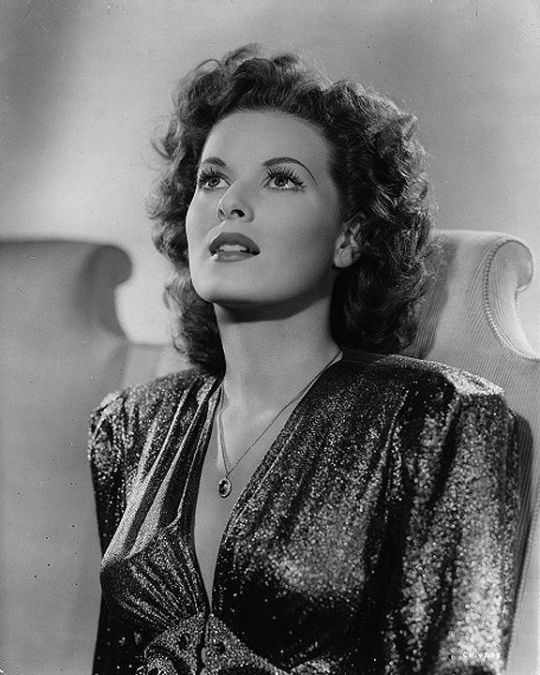
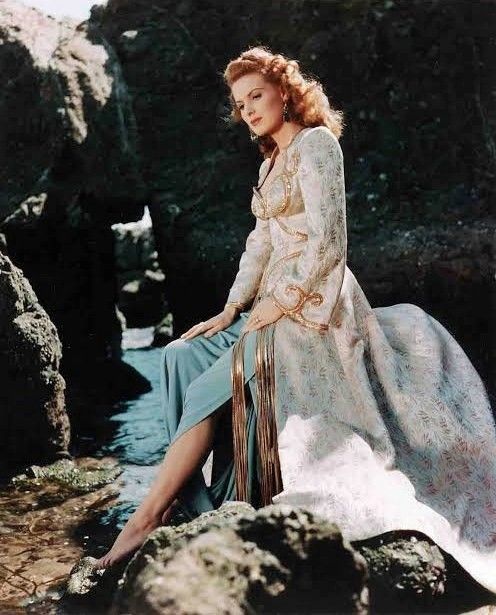
I thought she was one of the most beautiful women in the world when I was a kid and I have yet to really change my mind. Always loved her temper and her red hair. Plus she was kind of a MILF in The Parent Trap

Haughty, red hair, hot.
I would have to give up my passport if I didn't submit Maureen O'Hara but also have you seen her? Not only did she look like that (she was called the Queen of Technicolor, though she wasn't a big fan of that sobriquet), she was also very funny and tough as nails. She faced off against Walt Disney in a contract dispute and the legend goes that when someone mentioned her at his deathbed, he sat up and said 'That bitch!'. Her comment on that story is "At least he didn't think of me and say, 'That wimp'." She struggled to get serious roles for a time, saying ""Hollywood would never allow my talent to triumph over my face," so she plays the sexy princess/pirate/harem girl in a LOT of early movies that she referred to as "Tits and Sand" films, she being the tits in question. She also turned down so many leading men and studio bosses (Errol Flynn and Howard Hughes are among her rejects) that there were rumours spread that she was a lesbian. Many egos were battered it seems. I'm including the infamous Lady Godiva scene in the photo propaganda for the sheer Moment of it [link] . It was a bit of a flop critically, but it was one of Clint Eastwood's first film appearances and she said he told her later that he was very glad of the money at the time.
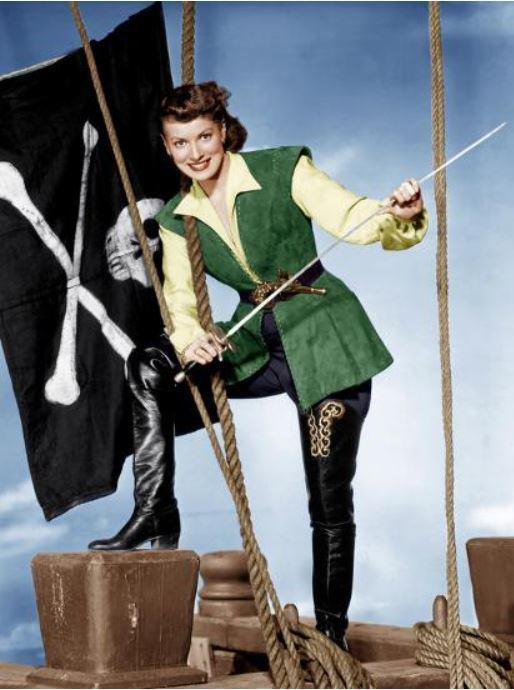

She was a very proud Irish woman and when she went for her American citizenship they insisted on referring to her as British (the timeline of Irish independence is a bit wibbly wobbly, we won't get into it here). She refused to accept American citizenship under that condition and argued her way through every level of US immigration she could find, supposedly saying "I'm not responsible for your antiquated records here in Washington", until a judge finally gave up and said "Give her what she wants, just get her out of here". This made her the first ever person seeking US citizenship to be proclaimed Irish on the record!

The hair. The accent. The figure. The acting chops. The perfection.

170 notes
·
View notes
Text

Lili Elbe
So this is a bit of a personal piece for me. I'm currently fighting what seems to be a losing battle to get to transition medically, so I decided to paint Lili in protest of that. The reference I used for colouring is a portrait her (then) wife painted of her and that honestly makes me a little insane? Like. I'm painting her through the eyes of her lover. That's wild.
Little info about her: She was a Danish painter who was assigned male at birth and was among the first to receive gender affirming surgery in 1930. By the 1920's she often presented as a woman, even outside of home.
Reblogs are always appreciated <33 (and comms are open as well)
Tag list (DM me to join):
@dukeoftheblackstar @penandsaber @poisonedyouth @saga-ordsmed @rt-d00-t @milf-maul @brother-genitivi @idontmeanto @stand-up-and-screamo @thechaoticfanartist
34 notes
·
View notes
Text

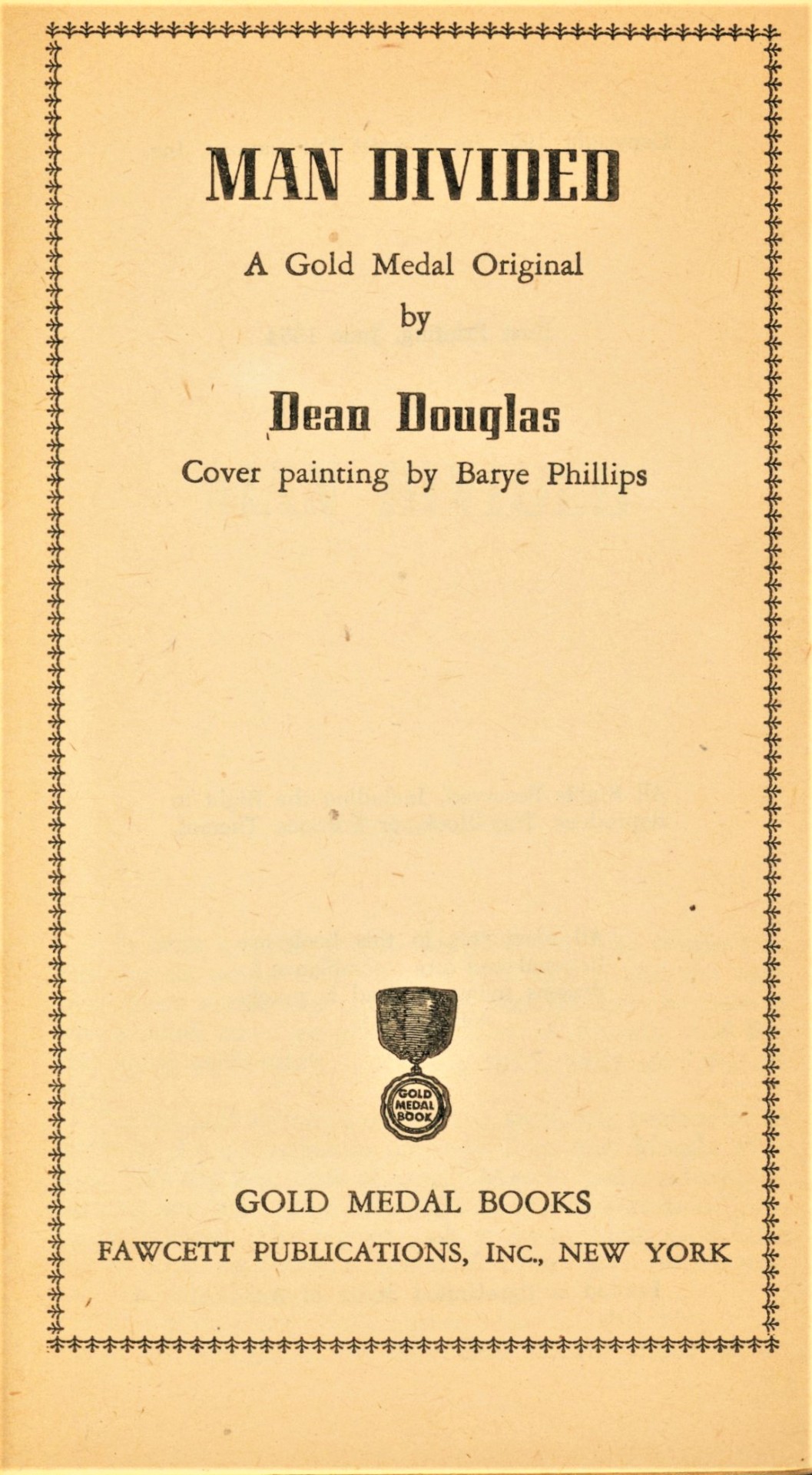

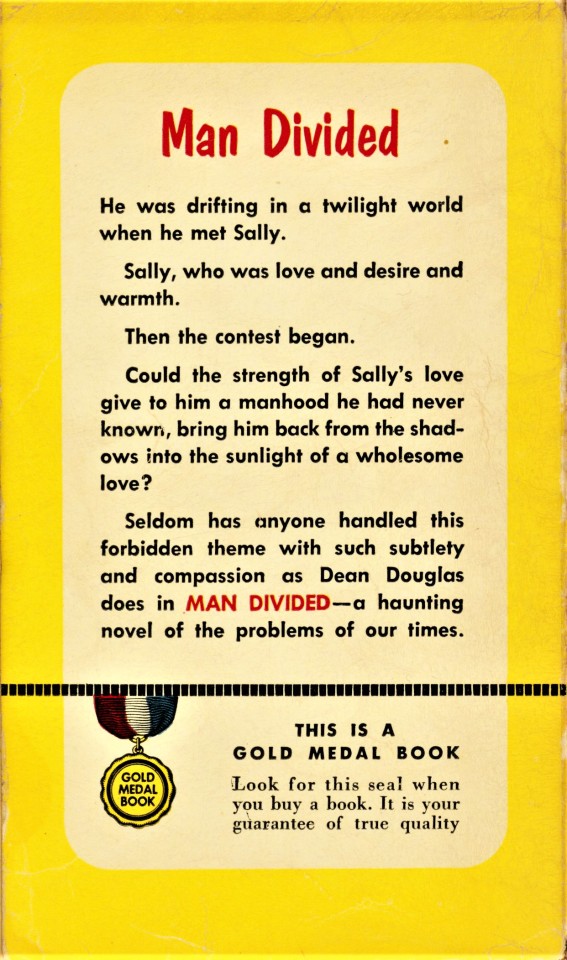
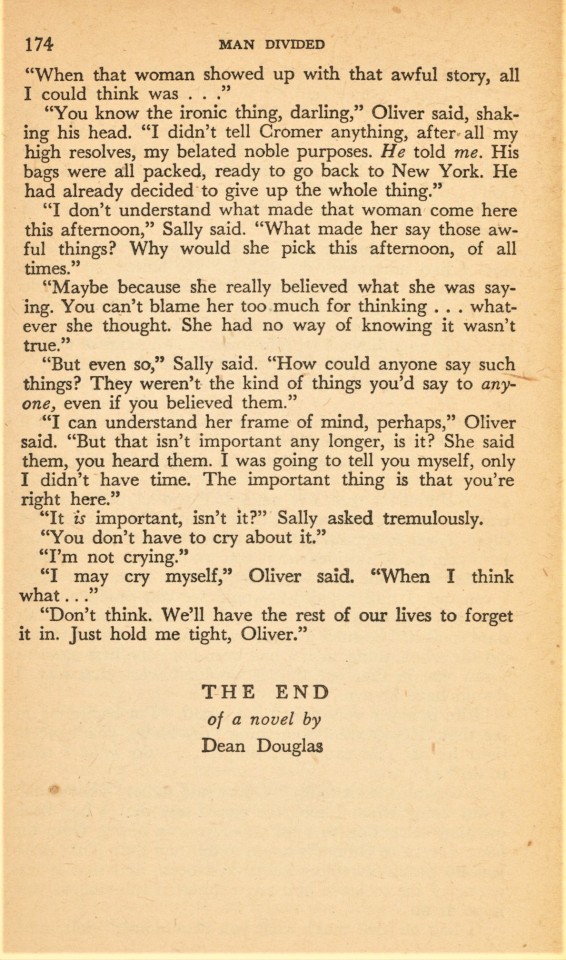
Steamy Saturday
Poor Oliver Peel. He faces "man's greatest tragedy -- and fear," having to choose between "a half world or a world of woman's love." C'mon, Oliver! Stop sulking. Get out of that chair, stand up for yourself, and embrace your true nature! But, alas, it is the early 1950s, and Oliver can only redeem himself through the true love of his wife Sally. Pity.
This week we bring you another gay romance novel, this time Man Divided by Dean Douglas, published in 1954 as an original pulp paperback by Gold Medal Books, an imprint of Fawcett Publications. Billed as "a haunting novel of the problems of our times," the narrative address the question, "Could the strength of Sally's love give him a manhood he had never known, bring him back from the shadows into the sunlight of a wholesome love?" Well, apparently it could, but we can only hope that it's wholesome. Sally's solution: "Don't think. We'll have the rest of our lives to forget it in. Just hold me tight. . ." Good luck with that, Oliver.
Douglas Dean was a pseudonym used by the actor Dean Goodman (1920-2006), who was a radio, stage, and screen actor, once married to the daughter of Marlene Dietrich. He managed several well-known theatre companies and even helped form a union for community college professors. His work as Douglas Dean includes 12 paperback novels and short story collections. The cover art is by Barye Phillips (1924-1969), an American painter and illustrator of pulp magazines and paperbacks.
View other pulp fiction posts.
#Steamy Saturday#pulp fiction#romance fiction#romance novels#gay romance novels#gay fiction#Dean Douglas#Dean Goodman#Man Divided#Gold Medal Books#Fawcett Publications#Barye Phillips#gay men#homosexuality#LGBTQ+#UWM LGBT Collection
24 notes
·
View notes
Text

'Prague Street' as painted in 1920 by German painter Otto Dix (1891 - 1969). To quote directly from the catalogue/website, 'Along Prague Street, deformed men beg for money and attention. A woman in a tight pink dress has no time for them. The Nationalists do. Beside one veteran is a pamphlet entitled, "Jews Out!" The Nazis were not yet a National movement but one of their basic tenets was beginning to disseminate.'. Here is the link to that catalogue, to see a selection of all 296 of his paintings.
12 notes
·
View notes
Text
Jeanne Mammen, painter (1890-1976, Berlin)
She captured the modern 1920s life of Berlin and the new woman.

("Sie präsentiert", 1928)

(? Can't find title and date... )
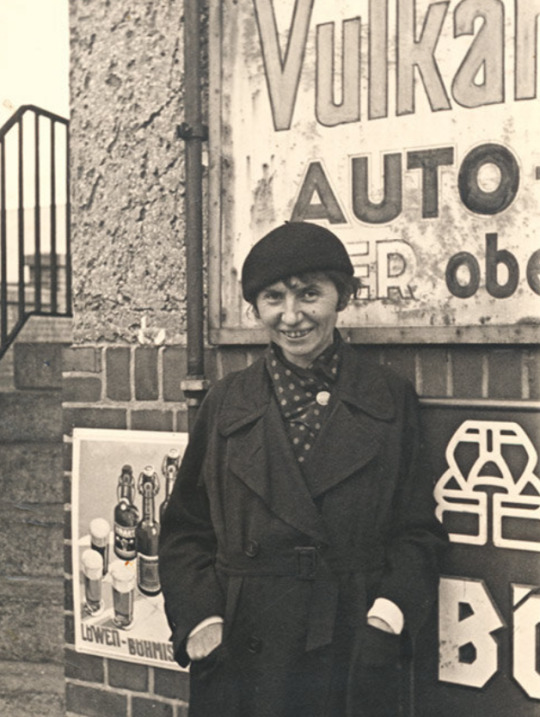
(portrait of the artist, source & date yet unknown to me...)
24 notes
·
View notes
Text
THIS DAY IN GAY HISTORY
based on: The White Crane Institute's 'Gay Wisdom', Gay Birthdays, Gay For Today, Famous GLBT, glbt-Gay Encylopedia, Today in Gay History, Wikipedia, and more … November 22


1869 – André Gide (d.1951) was a French author and winner of the Nobel Prize in literature in 1947. Gide's career ranged from its beginnings in the symbolist movement, to the advent of anticolonialism between the two World Wars.
Known for his fiction as well as his autobiographical works, Gide exposes to public view the conflict and eventual reconciliation between the two sides of his personality, split apart by a straight-laced education and a narrow social moralism.
Gide was born in Paris on 22 November 1869, into a middle-class Protestant family. His father was a Paris University professor of law and died in 1880.
Gide was brought up in isolated conditions in Normandy and became a prolific writer at an early age, publishing his first novel, The Notebooks of Andre Walter (French: Les Cahiers d'André Walter), in 1891.
In 1893 and 1894, Gide traveled in Northern Africa, and it was there that he came to accept his attraction to boys. He befriended Oscar Wilde in Paris, and in 1895 Gide and Wilde met in Algiers. There, Wilde had the impression that he had introduced Gide to homosexuality, but, in fact, Gide had already discovered this on his own.
In 1895, after his mother's death, he married his cousin Madeleine Rondeaux, but the marriage remained unconsummated.
In 1908, Gide helped found the literary magazine Nouvelle Revue Française (The New French Review).
In 1916, Marc Allégret, only 15 years old, became his lover. Marc was the son of Elie Allégret, best man at Gide's wedding. Of Allégret's five children, André Gide adopted Marc. The two fled to London, in retribution for which his wife burned all his correspondence, "the best part of myself," as he was later to comment.
In the 1920s, Gide became an inspiration for writers such as Albert Camus and Jean-Paul Sartre. In 1923, he published a book on Fyodor Dostoyevsky; however, when he defended pederasty in the public edition of Corydon (1924) he received widespread condemnation. He later considered this his most important work.
In 1923, he sired a daughter, Catherine, by Elisabeth van Rysselberghe, a woman who was much younger than him. He had known Elisabeth for a long time, as she was the daughter of his closest female friend, Maria Monnom, the wife of his friend, the Belgian neo-impressionist painter Théo van Rysselberghe. This would cause the only crisis in the long-standing relationship between Allégret and Gide and damaged the relation with Van Rysselberghe. This was possibly his only sexual liaison with a woman and it was brief in the extreme, but his daughter Catherine became his only descendant by blood. He liked to call Elisabeth "La Dame Blanche" ("The White Lady"). Elisabeth eventually left her husband to move to Paris and manage the practical aspects of Gide's life (they had adjoining apartments built for each of them on the rue Vavin). She worshipped him, but evidently they no longer had a sexual relationship. Gide's legal wife, Madeleine, died in 1938. Later he used the background of his unconsummated marriage in his novel Et Nunc Manet in Te.
From July 1926 to May 1927, he travelled through the French Equatorial Africa colony with his lover Marc Allégret. In his published journal, he criticized the behavior of French business interests in the Congo and inspired reform. In particular, he strongly criticized the Large Concessions regime, according to which part of the colony was conceded to French companies which could exploit all of the area's natural resources, in particular rubber. He related how natives were forced to leave their village during several weeks to collect rubber in the forest, and went as far as comparing their exploitation to slavery. The book had important influence on anti-colonialism movements in France and helped re-evaluate the impact of colonialism.
Gide left France for Africa in 1942 and lived in Tunis until the end of World War II. In 1947, he received the Nobel Prize in Literature. He devoted much of his last years to publishing his Journal. Gide died in Paris on 19 February 1951. The Roman Catholic Church placed his works on the Index of Forbidden Books in 1952.

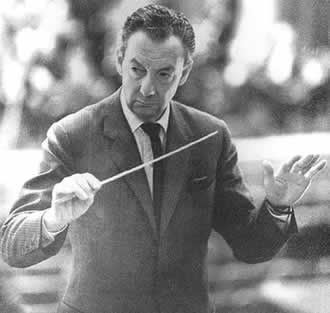
1913 – Benjamin Britten, Baron Britten, (d.1976) was an English composer, conductor, and pianist. He showed talent from an early age, and first came to public attention with the a cappella choral work A Boy Was Born in 1934. With the premiere of his opera Peter Grimes in 1945, he leapt to international fame. For the next fifteen years he devoted much of his compositional attention to writing operas, establishing him as one of the leading 20th century figures in this genre. Britten's interests as a composer were wide-ranging; he produced important music in such varied genres as orchestral, choral, solo vocal (much of it written for the tenor Peter Pears), chamber and instrumental, as well as film music. He also took a great interest in writing music for children and amateur performers, and was an outstanding pianist and conductor.
Britten was born in Lowestoft, Suffolk. His father was a dentist, and his mother a talented amateur musician who gave Britten his first lessons in piano and notation. He showed musical gifts very early in life, making his first attempts at composition aged five, and thereafter composing prolifically as a child. He started piano lessons with a teacher from his pre-prep school when aged 7, and viola lessons when 10 years old.
Britten heard Frank Bridge's orchestral poem The Sea at a festival and was, as he put it, 'knocked sideways'. A family friend of Frank Bridge and was able to arrange an introduction. After examining Britten's work, Bridge took him on as a composition pupil.
In April 1935, he was approached by the film director Alberto Cavalcanti to write the film score for the documentary The King's Stamp, produced by the GPO Film Unit. He subsequently met W. H. Auden, who was also working for the GPO Film Unit; together they worked on the films Coal Face and Night Mail. They also collaborated on the song cycle Our Hunting Fathers Op. 8, radical both in politics and musical treatment, and other works.
Of more lasting importance to Britten was his meeting in 1937 with the tenor Peter Pears, who was to become his musical collaborator and inspiration as well as his life partner. In the same year he composed a Pacifist March (words, Ronald Duncan) for the Peace Pledge Union, of which, as a pacifist, he had become an active member, but the work was not a success and soon withdrawn. One of Britten's most noteworthy works from the 1930s was Variations on a Theme of Frank Bridge for string orchestra, Op. 10, written in 1937.
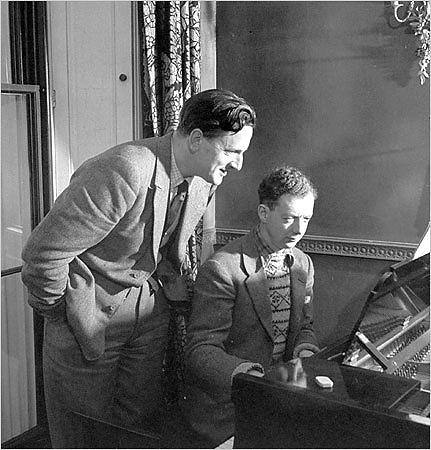
Britten (seated) and Peter Pears
In early 1939, Britten and Pears followed Auden to America. There, in 1940, Britten composed Seven Sonnets of Michelangelo, the first of many song cycles for Pears. Already friends with the composer Aaron Copland, Britten encountered his latest works Billy the Kid and An Outdoor Overture, both of which manifestly influenced his own music. While in America Britten wrote his first music drama, Paul Bunyan, an operetta (to a libretto by Auden). The period in America was also remarkable for a number of orchestral works, including the Violin Concerto Op. 15, and Sinfonia da Requiem Op. 20 (for full orchestra).
Britten and Pears returned to England in 1942, and both applied for recognition as conscientious objectors. He completed the choral works Hymn to St. Cecilia (his last large-scale collaboration with Auden) and A Ceremony of Carols during the long sea voyage. He had already begun work on his opera Peter Grimes based on the writings of Suffolk poet George Crabbe, and its première at Sadler's Wells in 1945 was his greatest success thus far.
Peter Grimes was the first in a series of English operas, of which Billy Budd (1951) and The Turn of the Screw (1954) were particularly admired. His Shakespeare opera, A Midsummer Night's Dream, followed in 1960. These operas share common themes. Even in his comic opera Albert Herring of 1947, all feature an 'outsider' character excluded or misunderstood by society. Often this is the eponymous protagonist, as in Peter Grimes and Owen Wingrave.
In his last decade, Britten's health deteriorated,and his later works became more and more sparse in texture. They include the operas Owen Wingrave (1970) and Death in Venice (1971-1973) Having previously declined a knighthood, Britten accepted a life peerage on 2 July 1976 as Baron Britten, of Aldeburgh in the County of Suffolk. A few months later he died of heart failure at his house in Aldeburgh. He is buried in the churchyard of St. Peter and St. Paul's Church there. The grave of his partner, Sir Peter Pears, lies next to his. A memorial stone to him was unveiled in the north choir aisle of Westminster Abbey in 1978.


1938 – John Eleuthère du Pont (d.2010) was an American philanthropist and heir to the Du Pont family fortune who in 1996 murdered Olympic gold medal winning wrestler Dave Schultz. He was a published ornithologist, philatelist, philanthropist, conchologist, sports enthusiast, and self-styled wrestling coach. In 1972 du Pont founded and directed the Delaware Museum of Natural History and contributed to Villanova University and other institutions.
After his mother's death, du Pont developed the 440-acre (1.8 km2) Liseter Hall Farm in Newtown Square as a high-quality wrestling facility for amateur wrestlers. He called the private group "Team Foxcatcher", after his father's noted racing stable. Du Pont established an Olympic swimming and wrestling training center and sponsored competitive events at the estate. He also allowed some people, such as Olympic champion wrestlers Mark Schultz and later his older brother David Schultz and his wife, to live in houses on the grounds for years. Schultz also coached the Foxcatcher team.
In August 1988, a problem-plagued wrestling program he funded at Villanova was shut down after just two years. In December 1988, a lawsuit (which was settled out of court) claimed du Pont had made improper sexual advances to Villanova assistant coach Andre Metzger.
Du Pont became a sponsor in wrestling, swimming, track, and the modern pentathlon. He was also involved in promoting a subset of the modern pentathlon (run, swim, shoot) as a separate event. He took up athletics and became a competitive wrestler in his 50s. His only prior wrestling experience was as a freshman in high school. He began competing again at the age of 55 in the 1992 Veteran's World Championships in Cali, Colombia; following that in 1993 in Toronto, Ontario; in 1994 in Rome, Italy; and in 1995 in Sofia, Bulgaria.In the 1990s, friends and acquaintances were concerned about his erratic and paranoid behavior, but his wealth shielded him. On January 26, 1996, du Pont shot and killed Dave Schultz in the driveway of Schultz's home on du Pont's 800-acre (3.2 km2) estate. Schultz's wife Nancy and du Pont's head of security Patrick Goodale were present and witnessed the crime. The security chief was sitting in the passenger seat of du Pont's car when du Pont fired three bullets into Schultz. Police did not establish a motive. Schultz had worked with du Pont to coach the wrestling team for years. Schultz had also tried to help du Pont with his drinking problem. On February 25, 1997, he was convicted of murder in the third degree for the January 26, 1996, shooting death of Dave Schultz. He was ruled to have been mentally ill but not insane and was sentenced to prison for 13 to 30 years. He died in prison at age 72 on December 9, 2010. He was the only member of the Forbes 400 richest Americans ever to be convicted of murder.
Du Pont is the subject of the 2014 film Foxcatcher, in which he is portrayed by Steve Carell.


1943 – Billie Jean King is a former professional tennis player from the United States. She won 12 Grand Slam singles titles, 16 Grand Slam women's doubles titles, and 11 Grand Slam mixed doubles titles. King has been an advocate against sexism in sports and society. She won "The Battle of the Sexes" in 1973, in which she defeated Bobby Riggs, a former Wimbledon men's singles champion, for $100,000, winner take all.
Billie Jean Moffit was born in Long Beach, California, into a conservative Methodist family, the daughter of a fireman father and housewife mother. Billie Jean attended Long Beach Polytechnic High School. After graduating, she attended California State University, Los Angeles (CSULA) because her parents could not afford Stanford or the University of Southern California (USC).
She married Lawrence (Larry) King in Long Beach, California on September 17, 1965. In 1971, she had an abortion, which Mr. King revealed to the public in a 1972 Ms. Magazine article, without consulting Mrs. King in advance. King said in her 1982 autobiography that she decided to have an abortion because she believed her marriage was not solid enough to bring a child into her family. Billie Jean and Lawrence divorced in 1987.
By 1968, King realized that she was interested in women, and in 1971, the same year of the abortion and while still married to Lawrence King, she began an intimate relationship with her secretary, Marilyn Barnett. King was forced to acknowledge the relationship when it became public in a May 1981 "palimony" lawsuit filed by Barnett, making King the first prominent professional female athlete to come out as a lesbian. King said that she had wanted to retire from competitive tennis in 1981 but could not afford to because of the lawsuit.
"Within 24 hours [of the lawsuit being filed], I lost all my endorsements; I lost everything. I lost $2 million at least, because I had longtime contracts. I had to play just to pay for the lawyers. In three months I went through $500,000 [$1,207,416 today]. I was in shock. I didn't make $2 million in my lifetime, so it's all relative to what you make." King said in 1998 that Martina Navratilova was not supportive when King was outed, resulting in their relationship having a "very bad five years."
Speaking about the lawsuit in 2007, 26 years after it was filed, King said:
It was very hard on me because I was outed and I think you have to do it in your own time. Fifty per cent of gay people know who they are by the age of 13. I was in the other 50%. I would never have married Larry if I'd known. I would never have done that to him. I was totally in love with Larry when I was 21.
Concerning the personal cost of concealing her sexuality for so many years, King said:
I wanted to tell the truth but my parents were homophobic and I was in the closet. As well as that, I had people tell me that if I talked about what I was going through, it would be the end of the women's tour. I couldn't get a closet deep enough. I've got a homophobic family, a tour that will die if I come out, the world is homophobic and, yeah, I was homophobic. If you speak with gays, bisexuals, lesbians and transgenders, you will find a lot of homophobia because of the way we all grew up. One of my big goals was always to be honest with my parents and I couldn't be for a long time. I tried to bring up the subject but felt I couldn't. My mother would say, "We're not talking about things like that", and I was pretty easily stopped because I was reluctant anyway. I ended up with an eating disorder that came from trying to numb myself from my feelings. I needed to surrender far sooner than I did. At the age of 51, I was finally able to talk about it properly with my parents and no longer did I have to measure my words with them. That was a turning point for me as it meant I didn't have regrets any more.
On August 12, 2009, she was awarded the Presidential Medal of Freedom by President Barack Obama for her work advocating for the rights of women and the lesbian, gay, bisexual, and transgendered community. "This is a chance for me - and for the United States of America - to say thank you to some of the finest citizens of this country and of all countries", President Obama said.
King currently resides in New York and Chicago with her partner, Ilana Kloss.


1964 – Stephen Geoffreys is an American actor. Born Stephen Miller in Cincinnati, Ohio, Geoffreys first began acting on the stage. In 1984, he was nominated for Broadway's Tony Award for "Best Performance by a Featured Actor in a Musical" for his performance in a play based on the The Human Comedy. For this role, he won the Theatre World Award in 1984.
Geoffreys appeared in several horror and teen films in the 1980s, most notably Heaven Help Us (1985) as well as Fraternity Vacation and 976-EVIL in 1989. He also played a supporting part in the critically acclaimed drama At Close Range in 1986. He is best known for playing the creepy "Evil Ed" in the 1985 vampire horror classic Fright Night starring Roddy McDowall. Two of Geoffrey's lines from that film became catch phrases in the mid 1980s: "To what do I owe this dubious pleasure?" and "You're so cool, Brewster!" Some have suggested that Geoffrey's refusal to appear in the Fright Night sequel was a major career misstep.
During the 1990s, Geoffreys appeared for several years in gay pornographic movies, using the aliases Sam Ritter and Stephan Bordeaux, moving from "bloodsucker to cocksucker" as one crtic put it.

Geoffreys returned to horror in a supporting role as "Mr. Putski" in the independent film Sick Girl, released in October 2007, after an almost 17 year absence from mainstream film. He went on to play a lead role in the horror film New Terminal Hotel. He later filmed the horror movie "Emerging Past", which also featured actor Brooke McCarter of The Lost Boys fame. Geoffreys' partner is John Wiliams.

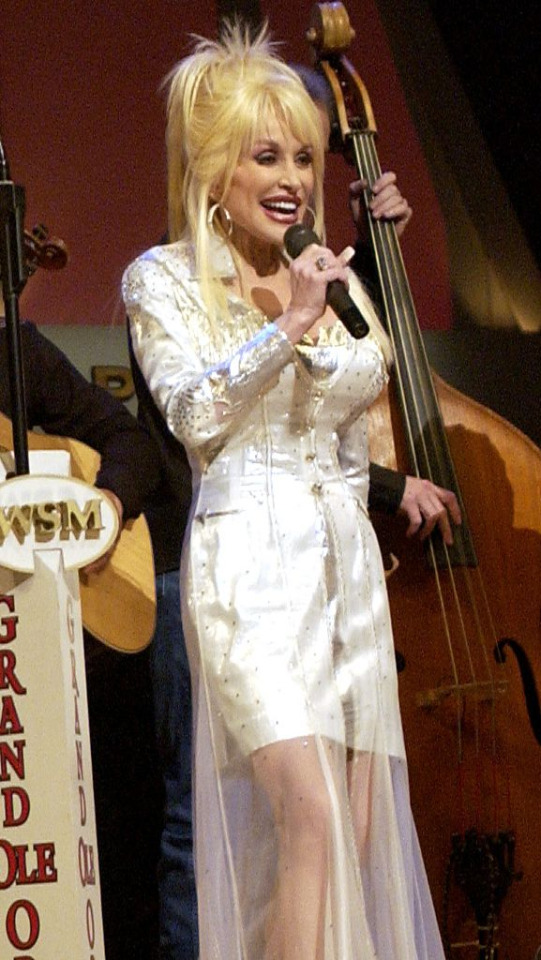
1993 – Dolly Parton denied rumors that she's a lesbian, saying gal pal Judy Ogle was just her best friend.

2008 – On this date the parliament of Burundi, one of the ten poorest countries in the world, and one of the smallest (at only 11,000 square miles--about the size of Belgium) unanimously voted to outlaw homosexuality. The irony here is that on the very same date the parliament also adopted a new set of laws abolishing the death penalty for the first time in the troubled nation's history. The sweeping law was seen as an important reform. It incorporated parts of international law on genocide, war crimes and crimes against humanity. It includes important safeguards against torture as well as sexual violence against women and children. But the new laws also criminalize homosexuality.

Today's Gay Wisdom:
Quotes from André Gide:
"Fish die belly-upward and rise to the surface; it is their way of falling."
"One does not discover new lands without consenting to lose sight of the shore for a very long time."
"It is better to be hated for what you are than to be loved for something you are not."
"Believe those who are seeking the truth. Doubt those who find it."
"Everything that needs to be said has already been said. But since no one was listening, everything must be said again."
It is easier to lead men to combat, stirring up their passion, than to restrain them and direct them toward the patient labors of peace.
It is only in adventure that some people succeed in knowing themselves - in finding themselves.
Know thyself. A maxim as pernicious as it is ugly. Whoever studies himself arrest his own development. A caterpillar who seeks to know himself would never become a butterfly.
Nothing prevents happiness like the memory of happiness.
The most important things to say are those which often I did not think necessary for me to say - because they were too obvious.
There are very few monsters who warrant the fear we have of them.


16 notes
·
View notes
Photo

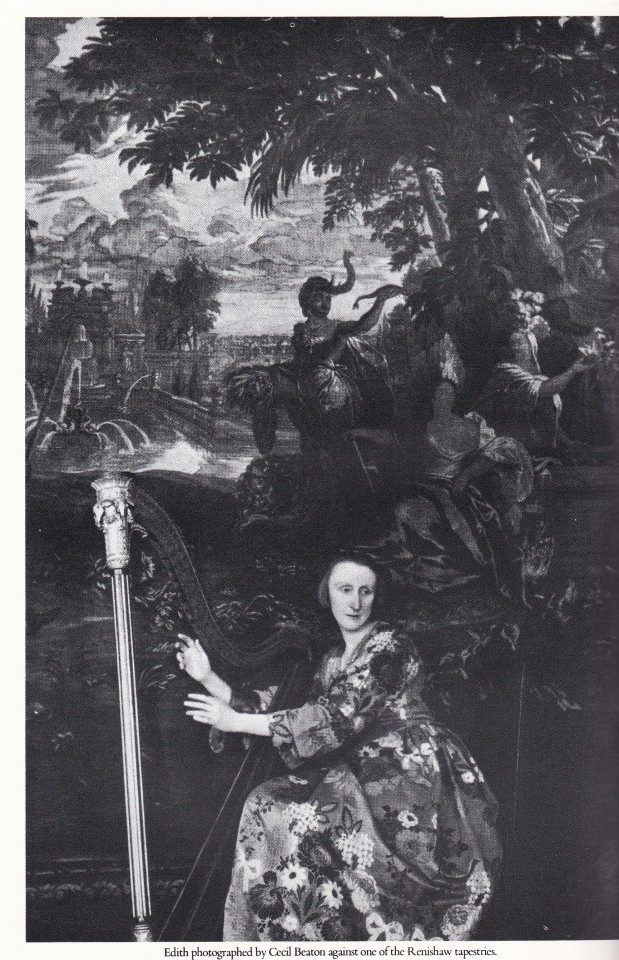

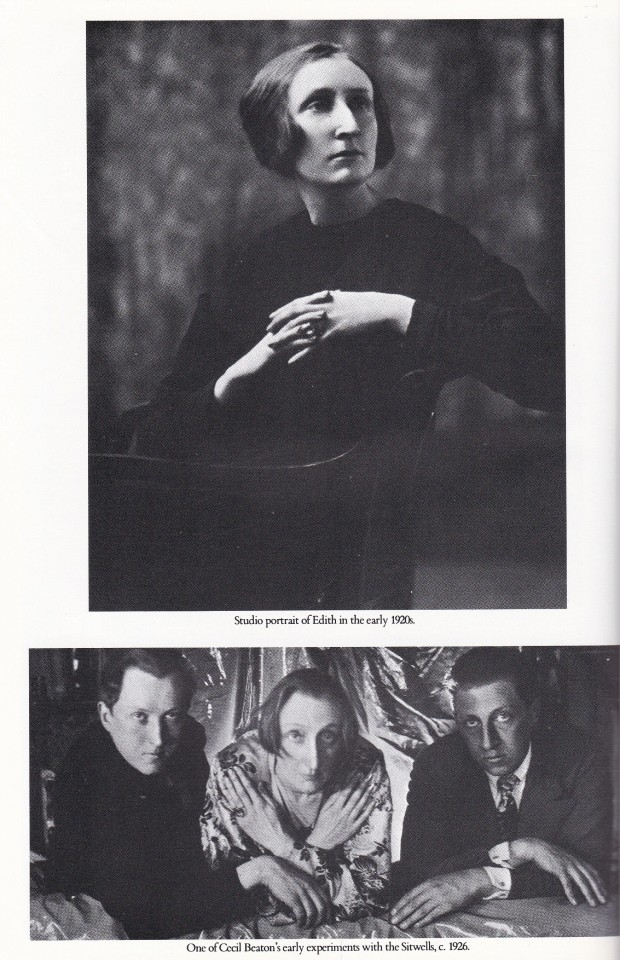
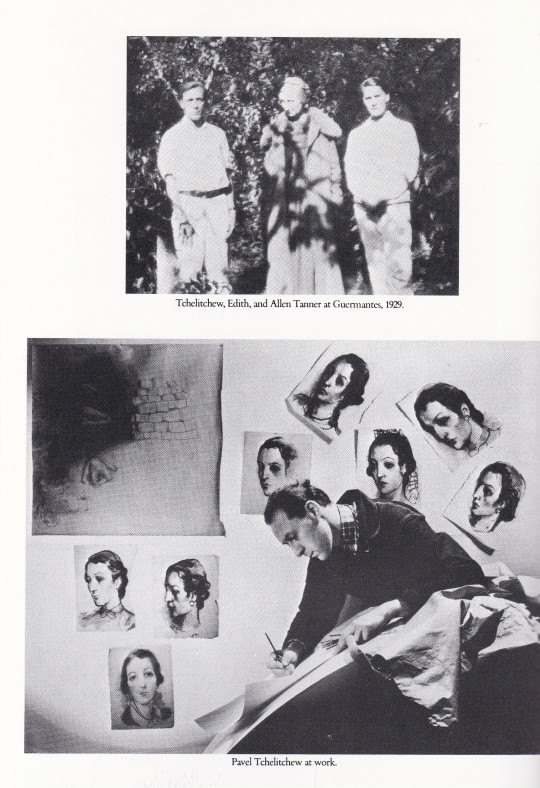
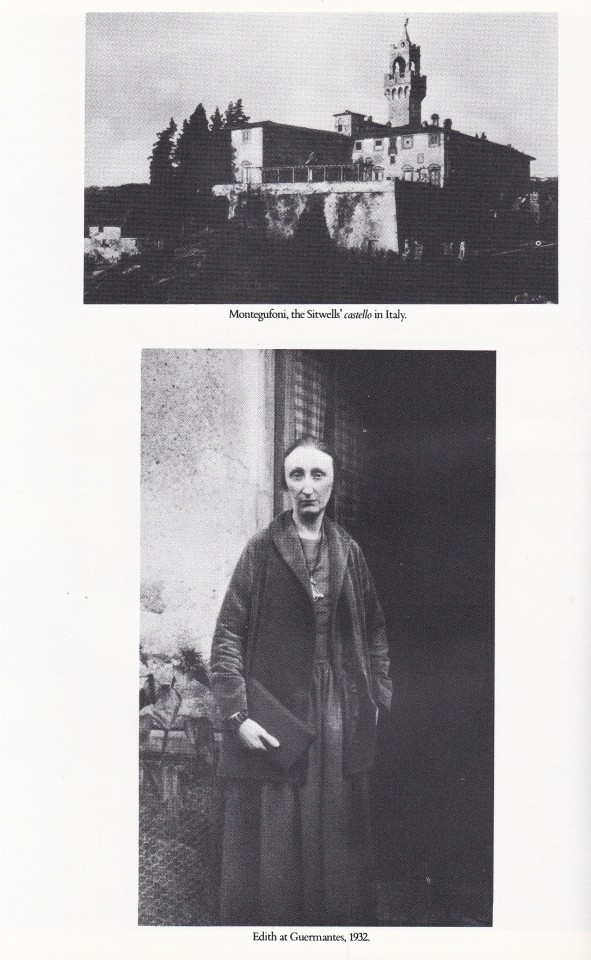

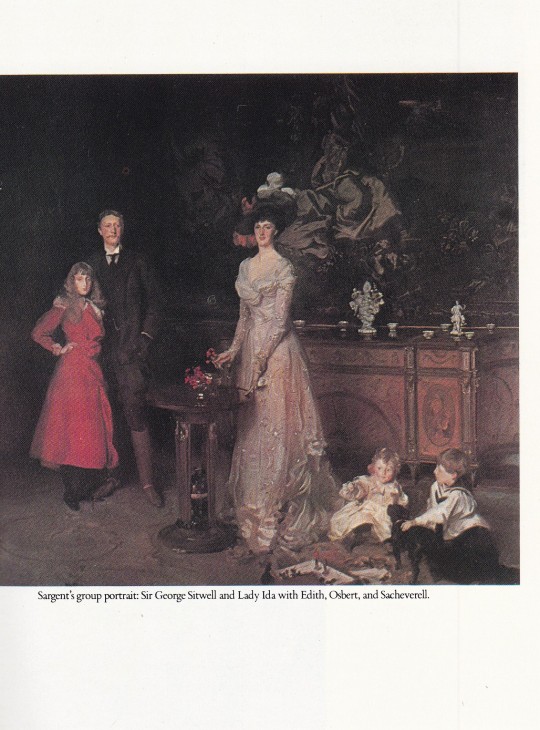
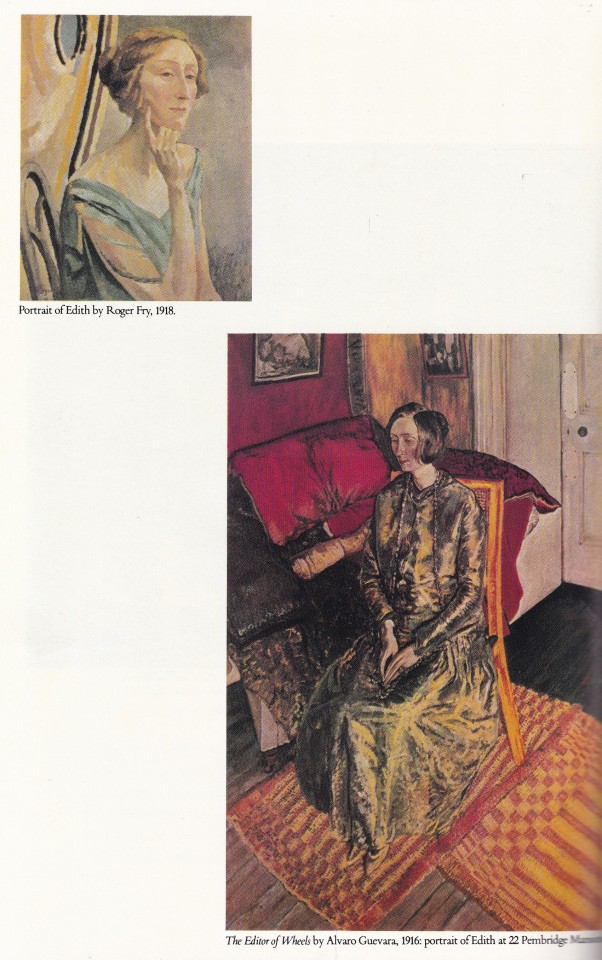

Edith Sitwell
A Unicorn Amongs Lions
Victoria Glendinning
Weidenfeld & Nicholson, London 1981, 393 pages, 20 illustrated pages, 13 x 20 cm, ISBN 0297778013
euro 30,00
email if you want to buy [email protected]
Freed from her unhappy homelife, Edith Sitwell set up home in a shabby London flat: she became one of the best-known 1920s pioneering poets. Victoria Glendinning presents a biography of a woman known for her eccentricity and gothic appearance.
Her looks attracted Cecil Beaton and the principal painters of the day. Among her friends were Aldous Huxley, T.S. Eliot, and Gertrude Stein. She rebuffed Wyndham Lewis and ardently loved the temperamental Russian painter, Pavel Tchelitchew. The 1930s she spent in penury, writing fiction, biography and verse. Only when Yeats hailed her as 'a major poet' did her work reach a wider audience, whereupon Edith Sitwell set off to conquer New York and Hollywood.
Winner of the Duff Cooper Prize and James Tait Black Memorial Prize for Biography, this is the definitive portrait of a spontaneous, gallant, yet tragically insecure woman.
'The excellence of Mrs Glendinning's book is that it remains wise and balanced while never sacrificing critical edge... It's hard to imagine a life of Edith Sitwell that could surpass it.' John Carey, "Sunday Times"
orders to: [email protected]
twitter: @fashionbooksmi
flickr: fashionbooksmilano
instagram: fashionbooksmilano
tumblr: fashionbooksmilano
16/02/23
#Edith Sitwell#Cecil Beaton#Roger Fry#Alvaro Guevara#eccentricity#gothic appearance#Sargent#Tchelitchew#Pavel Tchelitchew#Lady Machbeth#1920s pioneering poets#fashionbooksmilano
50 notes
·
View notes